
Glass and electronic component manufacturer Corning (NYSE:GLW) met Wall Street’s revenue expectations in Q3 CY2025, with sales up 20.9% year on year to $4.1 billion. The company expects next quarter’s revenue to be around $4.35 billion, coming in 5.3% above analysts’ estimates. Its non-GAAP profit of $0.67 per share was in line with analysts’ consensus estimates.
Is now the time to buy Corning? Find out by accessing our full research report, it’s free for active Edge members.
Corning (GLW) Q3 CY2025 Highlights:
- Revenue: $4.1 billion vs analyst estimates of $4.11 billion (20.9% year-on-year growth, in line)
- Adjusted EPS: $0.67 vs analyst estimates of $0.66 (in line)
- Adjusted EBITDA: $998 million vs analyst estimates of $1.15 billion (24.3% margin, 13.4% miss)
- Revenue Guidance for Q4 CY2025 is $4.35 billion at the midpoint, above analyst estimates of $4.13 billion
- Adjusted EPS guidance for Q4 CY2025 is $0.70 at the midpoint, above analyst estimates of $0.67
- Operating Margin: 14.4%, up from 8.9% in the same quarter last year
- Free Cash Flow Margin: 11%, down from 16.3% in the same quarter last year
- Market Capitalization: $76.56 billion
Company Overview
Supplying windows for some of the United States’s earliest spacecraft, Corning (NYSE:GLW) provides glass and other electronic components for the consumer electronics, telecommunications, automotive, and healthcare industries.
Revenue Growth
A company’s long-term performance is an indicator of its overall quality. Any business can have short-term success, but a top-tier one grows for years. Unfortunately, Corning’s 7% annualized revenue growth over the last five years was mediocre. This fell short of our benchmark for the industrials sector and is a poor baseline for our analysis.
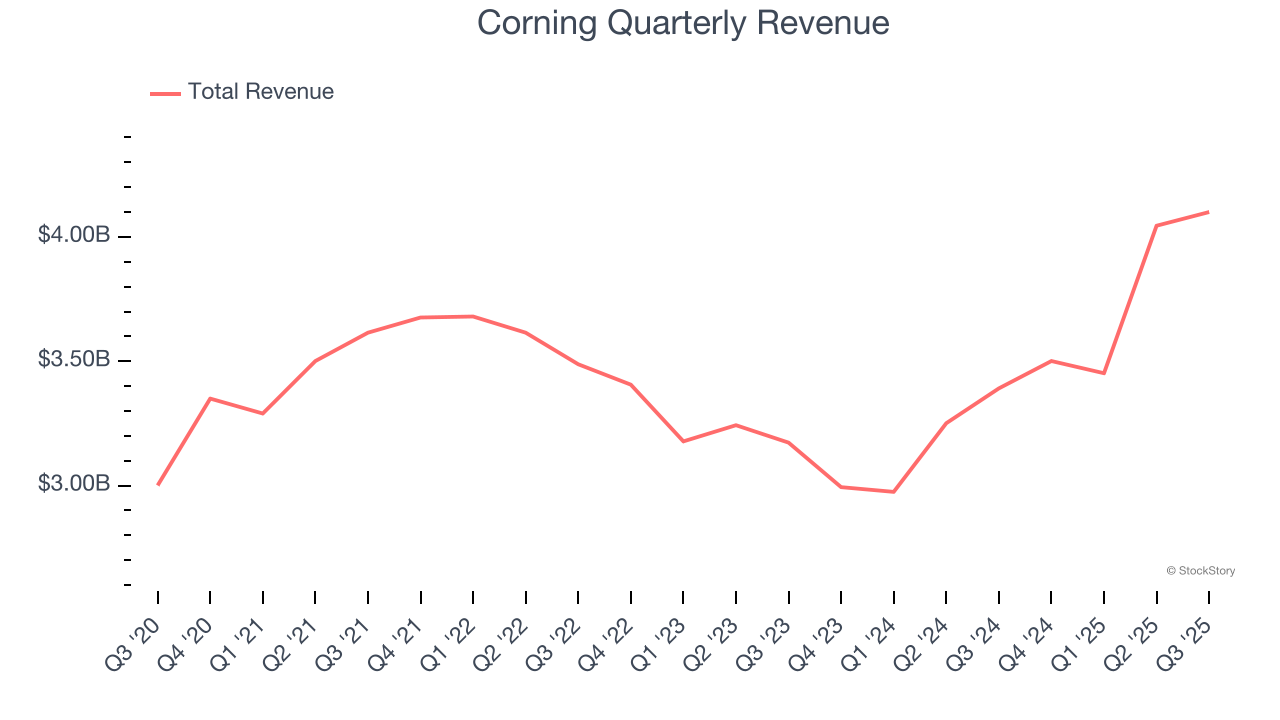
We at StockStory place the most emphasis on long-term growth, but within industrials, a half-decade historical view may miss cycles, industry trends, or a company capitalizing on catalysts such as a new contract win or a successful product line. Corning’s annualized revenue growth of 7.8% over the last two years aligns with its five-year trend, suggesting its demand was stable. We also think Corning’s recent performance stands out as many other Electronic Components businesses have faced declining sales because of cyclical headwinds. 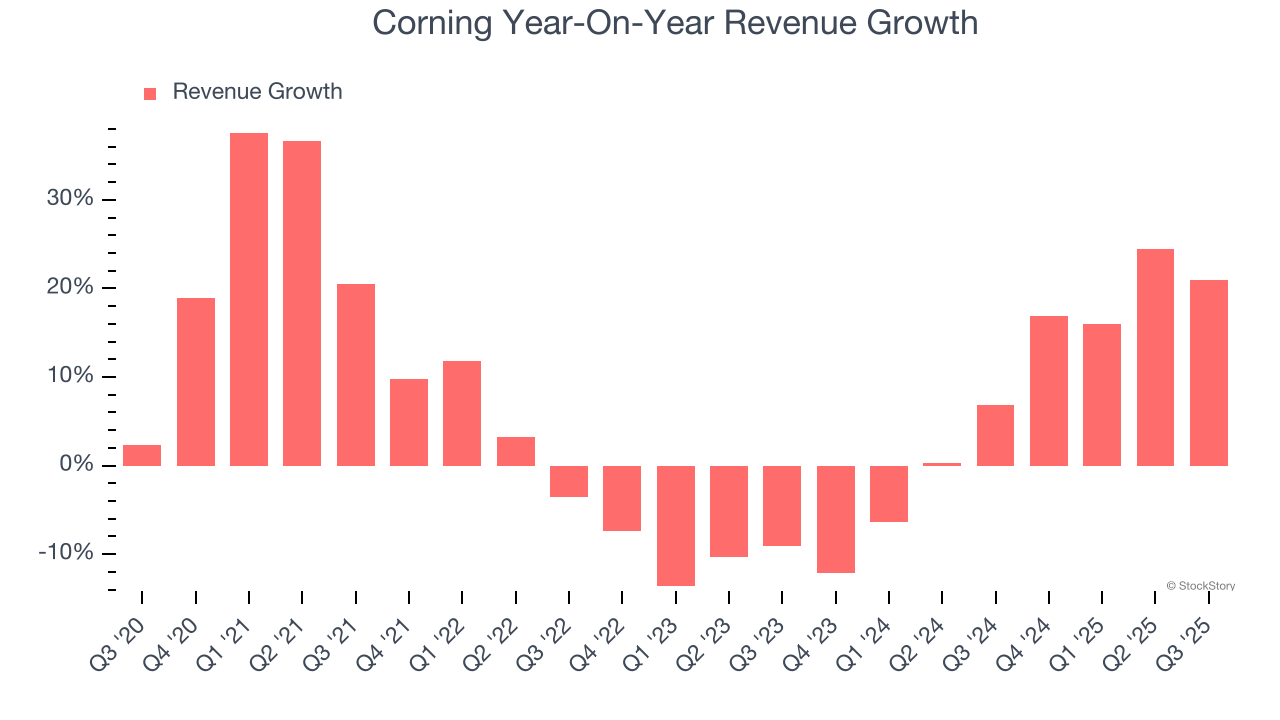
We can dig further into the company’s revenue dynamics by analyzing its most important segments, Optical Communications and Display Technologies, which are 40.3% and 22.9% of revenue. Over the last two years, Corning’s Optical Communications revenue (optical fiber & cables) averaged 21.1% year-on-year growth while its Display Technologies revenue (glass for flat panel displays) averaged 4.4% growth. 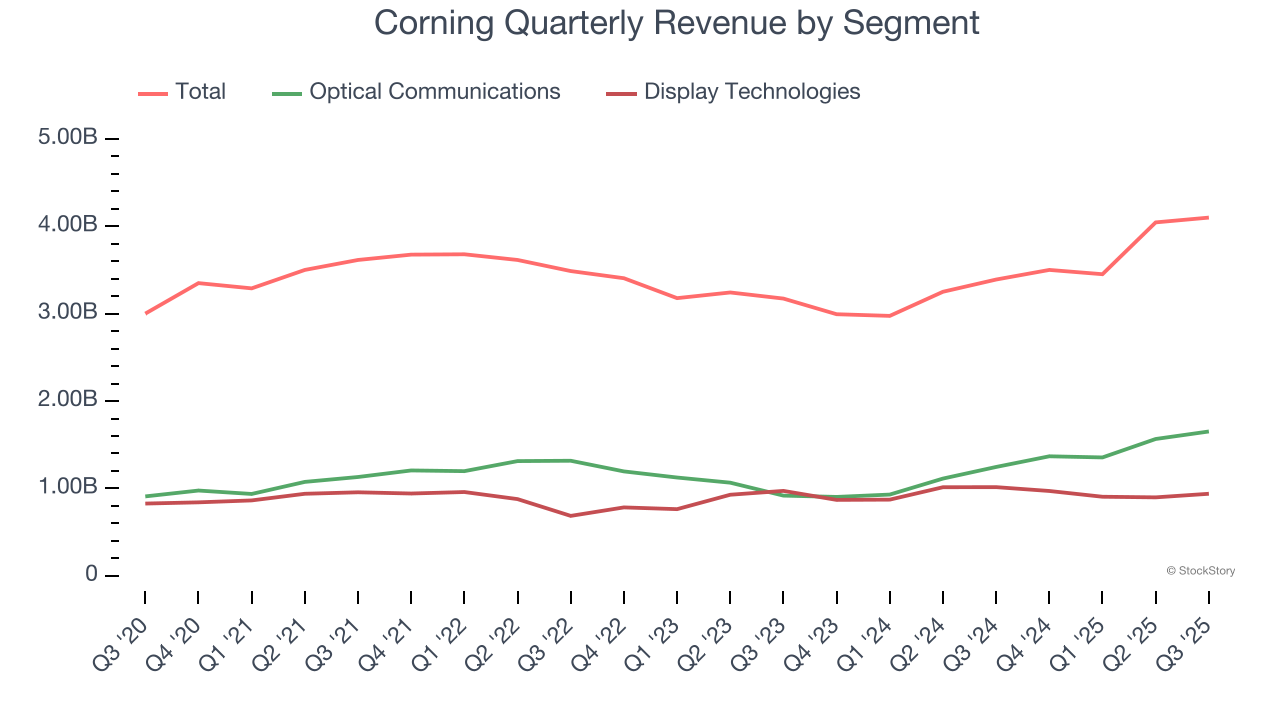
This quarter, Corning’s year-on-year revenue growth of 20.9% was excellent, and its $4.1 billion of revenue was in line with Wall Street’s estimates. Company management is currently guiding for a 24.3% year-on-year increase in sales next quarter.
Looking further ahead, sell-side analysts expect revenue to grow 11.9% over the next 12 months, an improvement versus the last two years. This projection is particularly noteworthy for a company of its scale and indicates its newer products and services will spur better top-line performance.
Today’s young investors won’t have read the timeless lessons in Gorilla Game: Picking Winners In High Technology because it was written more than 20 years ago when Microsoft and Apple were first establishing their supremacy. But if we apply the same principles, then enterprise software stocks leveraging their own generative AI capabilities may well be the Gorillas of the future. So, in that spirit, we are excited to present our Special Free Report on a profitable, fast-growing enterprise software stock that is already riding the automation wave and looking to catch the generative AI next.
Operating Margin
Corning has managed its cost base well over the last five years. It demonstrated solid profitability for an industrials business, producing an average operating margin of 11.1%. This result isn’t too surprising as its gross margin gives it a favorable starting point.
Looking at the trend in its profitability, Corning’s operating margin decreased by 2.1 percentage points over the last five years. This raises questions about the company’s expense base because its revenue growth should have given it leverage on its fixed costs, resulting in better economies of scale and profitability.
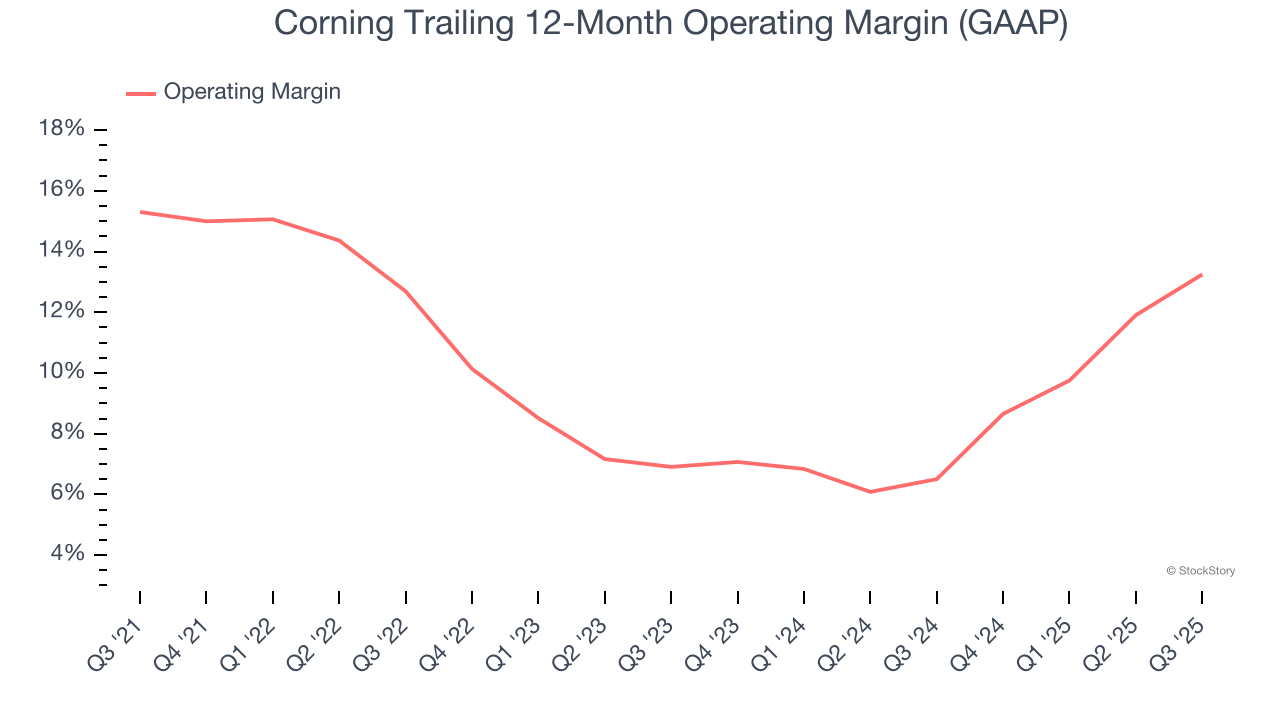
In Q3, Corning generated an operating margin profit margin of 14.4%, up 5.5 percentage points year on year. The increase was solid, and because its operating margin rose more than its gross margin, we can infer it was more efficient with expenses such as marketing, R&D, and administrative overhead.
Earnings Per Share
Revenue trends explain a company’s historical growth, but the long-term change in earnings per share (EPS) points to the profitability of that growth – for example, a company could inflate its sales through excessive spending on advertising and promotions.
Corning’s EPS grew at a remarkable 12.2% compounded annual growth rate over the last five years, higher than its 7% annualized revenue growth. This tells us the company became more profitable on a per-share basis as it expanded.
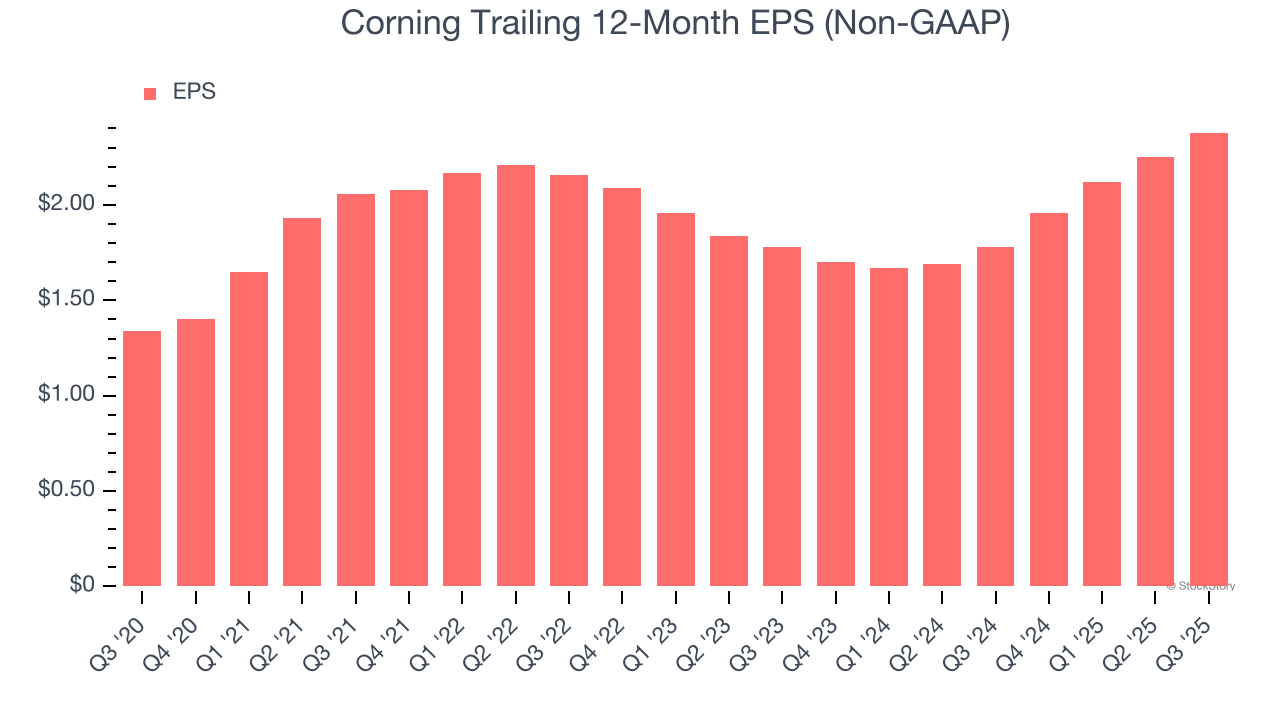
We can take a deeper look into Corning’s earnings quality to better understand the drivers of its performance. A five-year view shows that Corning has repurchased its stock, shrinking its share count by 2.4%. This tells us its EPS outperformed its revenue not because of increased operational efficiency but financial engineering, as buybacks boost per share earnings. 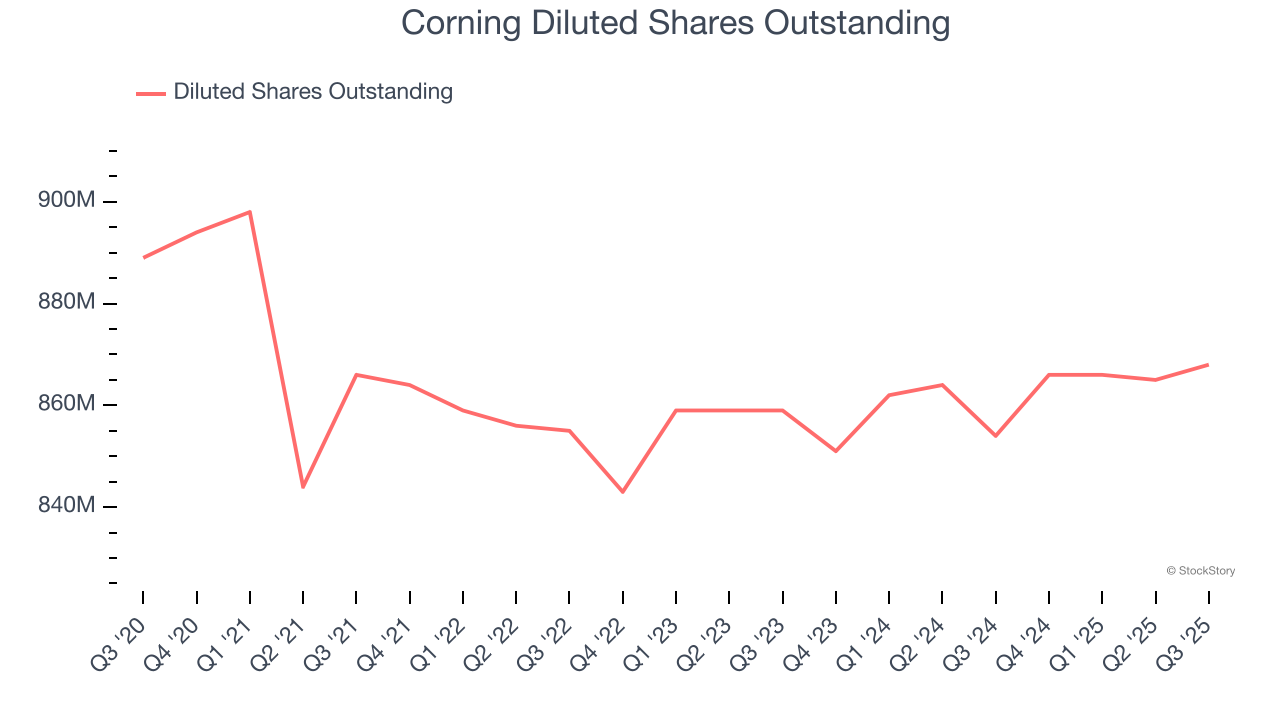
Like with revenue, we analyze EPS over a shorter period to see if we are missing a change in the business.
For Corning, its two-year annual EPS growth of 15.6% was higher than its five-year trend. We love it when earnings growth accelerates, especially when it accelerates off an already high base.
In Q3, Corning reported adjusted EPS of $0.67, up from $0.54 in the same quarter last year. This print was close to analysts’ estimates. Over the next 12 months, Wall Street expects Corning’s full-year EPS of $2.38 to grow 16.3%.
Key Takeaways from Corning’s Q3 Results
We were also glad its revenue guidance for next quarter exceeded Wall Street’s estimates. On the other hand, its and its EBITDA fell short of Wall Street’s estimates. Overall, this quarter could have been better. The stock traded down 5.5% to $84.43 immediately following the results.
Should you buy the stock or not? The latest quarter does matter, but not nearly as much as longer-term fundamentals and valuation, when deciding if the stock is a buy. We cover that in our actionable full research report which you can read here, it’s free for active Edge members.
